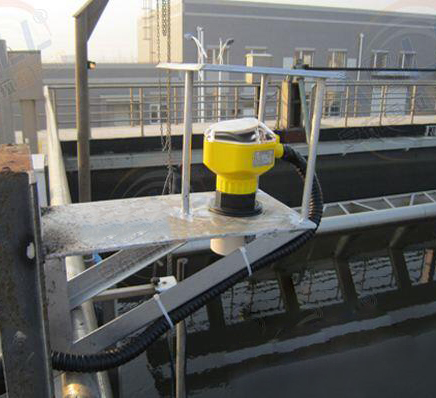Vacorda liquid level online measurementThe corrosion-resistant magnetic flap level gauge is made of polytetrafluoroethylene lined with 304 stainless steel combined with advanced lining technology, so it is also called the lined magnetic flap level gauge. This kind of magnetic flap level gauge has reliable anti-corrosion performance and is usually used to measure strong corrosive liquids.Polytetrafluoroethylene (PTFE) is used as an inner lining because of its excellent chemical stability and corrosion resistance, and is one of the best corrosion-resistant materials in the world. It has the reputation of “King of Plastics” and is suitable for strong acids, strong bases and strong oxidants. It is almost insoluble in all solvents and does not change even when boiled in aqua regia. However, there are many difficulties in the actual operation of the anticorrosive magnetic flap level gauge. So, what are the difficulties in the lining process of the anticorrosive magnetic flap level gauge?Because the lining structure of the 304 stainless steel lining PTFE anticorrosive magnetic flap level gauge is mainly composed of the main float tube lining, the flange process connection part lining and the magnetic floating surface outer lining. In order to facilitate people’s better understanding, when analyzing and explaining the many difficulties in the lining process of the anticorrosive magnetic flap level gauge, this article will also explain the main body, flange process connection, magnetic float and other aspects.Huikeda flap -11P lined magnetic flap level gaugeDifficulty oneIf the drawing speed of the Teflon tube is not well controlled, it is easy to crack and fail and need to be operated again.The inner surface of the main float tube of the Flap-11 magnetic flap level gauge adopts the latest Teflon stretch flanging technology. Heat the port of the PTFE tube to translucent, and use a special jig for flanging. Don’t use too much force when flanging, or the speed is too fast, otherwise the opening of the PTFE tube will easily crack. This is because the Teflon tube is tightly lined on the inner wall of the stainless steel tube, and the flanged Teflon tube is in close contact with the sealing surfaces of the flanges at both ends.How to solve Q: Huikeda?After A: Huikeda engineers researched, a tiger mouth was drawn on the surface of the PTFE tube near the two ports to form a three-way structure, which is convenient for connection with the process. Before stretching at the mouth of the tiger, you need to bake the PTFE tube to soften it, and then use a special tool to expand and stretch the PTFE tube out of the mouth of the tiger. Pay special attention to the speed of stretching when stretching, otherwise it will be easy to crack and fail. Re-operate. Difficulty twoTeflon has poor creep resistance and long compression and sealing time, which is easy to cause leakage.The inner lining of the flange connection part is made of polypropylene perfluorinated particles. For this part of the lining, many domestic manufacturers use PTFE rods to turn, then connect the small pipes of the flange through the process, and finally stretch the flanging to obtain a tapered sealing structure, which is fixed on the main float with screws. However, due to the poor creep resistance of PTFE, if the surface of PTFE is directly pressed on the surface of PTFE for sealing, it will easily cause leakage after a long time. How to solve Q: Huikeda? A: Huikeda adopts the latest molding technology, namely molding polypropylene perfluorinated pellets to realize the flange connection lining. The chemical resistance of PFEP is equivalent to that of polytetrafluoroethylene, and the working temperature is slightly lower than that of polytetrafluoroethylene, but its creep resistance is better than that of polytetrafluoroethylene. Therefore, when PFEP and polytetrafluoroethylene are used for sealing, the elasticity of PFEP can be used to make up for the lack of elasticity of polytetrafluoroethylene, so as to ensure the reliability of the seal.The molding of polyperfluoroethylene propylene is a complicated process, and the product is prone to cracking and foaming, which is difficult to control. However, with the efforts of the R&D personnel of Huikeda, after careful analysis and research on the performance of the pellets, the exhaust structure of the mold was reasonably arranged, and these difficulties were overcome, and a complete lining seal was produced to ensure corrosion resistance. Reliability of performance and tightness.Difficulty threePTFE material has no fluidity and high sintering temperature, so it is easy to crack and delamination in the application of PTFE layer, and it is not resistant to corrosion.The outer lining on the surface of the magnetic float is sintered by coating with a poly(perfluoroethylene propylene) film. The quality of the outer lining on the surface of the magnetic float will directly affect the use time of the float in corrosive media.For the anti-corrosion of the outer lining of floats, most domestic manufacturers use PTFE coating and sintering. Because the polytetrafluoroethylene material has no fluidity, the sintering temperature is high, and it is difficult to control, the prepared polytetrafluoroethylene layer is prone to cracking and delamination during use, which makes the anti-corrosion failure.How to solve Q: Huikeda?A: It is sintered by coating a layer of polyperfluoroethylene propylene film on the outer surface of the float to overcome this shortcoming. The fluidity of PFEP is better than that of PTFE, and the sintering temperature is lower than that of PTFE. The anti-corrosion layer will not crack, which ensures the reliability of float operation.
As people’s requirements for high reliability of products increase, corrosion-resistant magnetic flap level gauges have been widely used in industrial production. Huikeda will continue to work hard to develop and produce more and better products to better meet the individual needs of users.

Post time: 21-09-21
